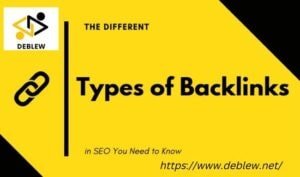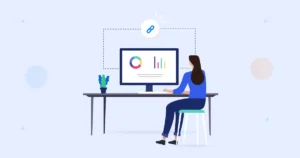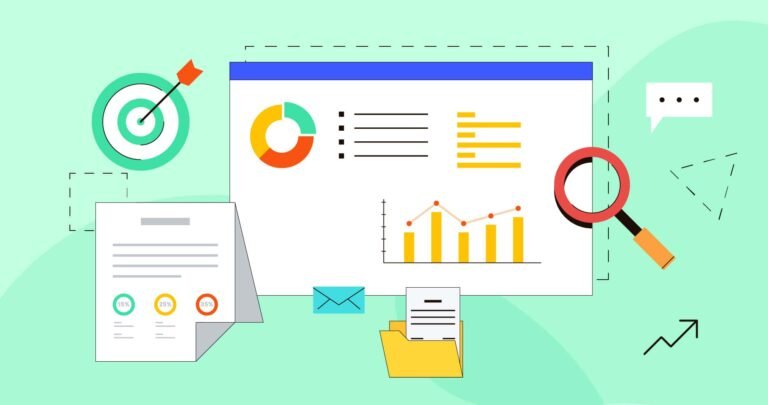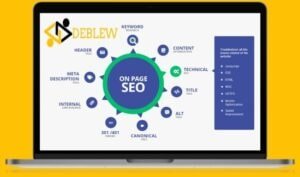Comprehensive SEO Checklist | Steps to Boost Your Website’s Rankings
In today’s digital world, achieving high rankings on search engines like Google is essential for driving traffic to your website. Search Engine Optimization (SEO) is the key to increasing your site’s visibility, and following a well-rounded SEO checklist can streamline your efforts and yield significant results. This comprehensive SEO checklist will guide you through each step, helping you optimize both the technical and content-related aspects of your website.
On-Page SEO Checklist
On-page SEO focuses on optimizing elements on your website itself, ensuring that your content is both search-engine-friendly and user-friendly.
Keyword Research and Optimization
Keyword research is the foundation of SEO. Finding relevant keywords ensures that your content aligns with what users are searching for. Tools like Google Keyword Planner, Ahrefs, and SEMrush can help identify keywords with high search volume and low competition.
Best practices: Once you’ve found your target keywords, include them naturally in your page titles, headings, meta descriptions, and throughout the body of your content. Avoid keyword stuffing, as this can hurt your rankings.
Optimizing Meta Titles and Descriptions
Meta titles and descriptions are the first things users see in search engine results. Crafting compelling and informative meta descriptions can increase click-through rates.
Tip: Keep titles under 60 characters and descriptions under 160 characters to ensure they don’t get cut off in search results. Include your primary keyword early in both.
Header Tags (H1, H2, H3)
Headers provide structure to your content, making it easier for both users and search engines to understand the hierarchy of information.
Best practice: Use an H1 tag for the main title, H2 tags for subheadings, and H3 or lower for more detailed sections. Ensure your primary keyword appears in the H1, and secondary keywords in H2s.
Image Optimization
Images enhance user engagement but can also slow down your site if not optimized. Proper image SEO ensures faster load times and improved rankings.
Optimize by: Compressing images to reduce file size, using descriptive file names, and adding relevant alt text (which helps search engines understand what the image represents).
Internal Linking
Internal links guide visitors through your website and help search engines discover and index your pages.
Tip: Create a logical internal linking structure by linking to related content, especially pages that need more visibility or rank lower in search results.
Technical SEO Checklist
Technical SEO ensures that your website functions optimally, allowing search engines to crawl and index it efficiently.
Mobile-Friendliness
With most searches now happening on mobile devices, a mobile-responsive website is crucial.
How to check: Use Google’s Mobile-Friendly Test to see if your site is optimized for mobile. Ensure that your website adjusts seamlessly across different screen sizes.
Page Speed Optimization
Slow-loading websites can hurt user experience and rankings. Fast websites rank higher and keep users engaged.
Tools: Use tools like Google PageSpeed Insights or GTmetrix to identify issues that may be slowing down your site, such as unoptimized images or excessive JavaScript.
XML Sitemap
An XML sitemap helps search engines index your website more effectively by listing all your pages.
Submit to search engines: Generate an XML sitemap (plugins like Yoast SEO can help with this) and submit it to Google Search Console and Bing Webmaster Tools.
Robots.txt and Crawling
Your robots.txt file tells search engines which pages to crawl and which to ignore. Incorrect settings could prevent search engines from indexing important pages.
Tip: Ensure your robots.txt file allows access to pages you want to rank, while disallowing private or unimportant pages (like admin login pages).
SSL Certificate (HTTPS)
Google has confirmed that HTTPS is a ranking factor. Securing your website with an SSL certificate not only helps protect user data but also boosts rankings.
Get started: If you don’t have an SSL certificate, contact your hosting provider to enable it, or use services like Let’s Encrypt for free SSL.
Off-Page SEO Checklist
Off-page SEO refers to actions taken outside your website that impact rankings, such as backlinks and social signals.
Backlink Strategy
Backlinks are a major ranking factor. High-quality backlinks from authoritative sites signal to search engines that your website is trustworthy and credible.
Tip: Focus on earning backlinks from relevant, authoritative websites through guest posts, partnerships, and outreach. Avoid spammy links, which can lead to penalties.
Social Signals
While not a direct ranking factor, social media can drive traffic to your site and indirectly boost your SEO by increasing visibility and engagement.
Strategy: Share your content on platforms like Twitter, Facebook, and LinkedIn to encourage social shares, which can lead to more visibility and backlinks.
Guest Posting
Guest posting allows you to publish content on other websites in exchange for backlinks to your own site.
How to find opportunities: Use search terms like “write for us” or “guest post guidelines” alongside your niche keywords to identify relevant websites.
Local SEO Checklist
If you operate a local business, local SEO ensures that your business shows up in geographically relevant searches.
Google My Business Optimization
Claiming and optimizing your Google My Business (GMB) profile is essential for local SEO.
Best practices: Fill out all the details in your GMB profile, including accurate business name, address, phone number (NAP), hours of operation, and add photos. Encourage satisfied customers to leave reviews.
Local Keywords
Incorporate location-specific keywords in your titles, meta descriptions, and content to rank better for local searches.
Tip: Add phrases like “near me” and your city or region in key sections of your content.
Content SEO Checklist
Creating quality content that resonates with users is at the heart of SEO. Search engines reward informative, engaging, and well-structured content.
Creating High-Quality, Engaging Content
Your content should answer users’ queries and provide value. Whether it’s a blog post or a product page, your content should be comprehensive, clear, and helpful.
Tip: Conduct research on what your audience wants and create content that solves their problems or answers their questions.
Content-Length and Structure
Longer, well-structured content tends to perform better in search results. Use subheadings, bullet points, and short paragraphs to break up your content.
Tip: Aim for at least 1,000 words in blog posts, but make sure the content stays relevant and informative.
Regular Blog Posting
Consistently updating your blog with fresh content signals to search engines that your site is active.
Strategy: Stick to a regular posting schedule and write about trending topics in your niche to maintain relevance.
SEO Analytics and Monitoring
Tracking your SEO progress allows you to identify what’s working and where improvements are needed.
Google Analytics Setup
Google Analytics helps you monitor your website’s performance, including traffic, user behavior, and conversion rates.
Set up: Install Google Analytics on your site and track key metrics like bounce rate, session duration, and organic traffic sources.
Google Search Console
Google Search Console is essential for monitoring your website’s performance in search results. It helps you track keyword rankings, fix errors, and submit sitemaps.
Key tasks: Use Search Console to check for indexing issues, identify broken links, and monitor search queries that bring traffic to your site.
Tracking Keyword Rankings
Monitoring your keyword rankings allows you to adjust your SEO strategy as needed. Use tools like Ahrefs, SEMrush, or Moz to track keyword performance over time.
Tip: Keep an eye on both ranking fluctuations and competitors’ strategies to stay ahead.
Conclusion
Following this comprehensive SEO checklist will help you optimize your website for better visibility, higher rankings, and increased traffic. SEO is an ongoing process, so regularly revisit this checklist to ensure your site stays up to date with best practices. By focusing on on-page, technical, off-page, local, and content SEO, you can improve your site’s performance and user experience, ensuring long-term success.







